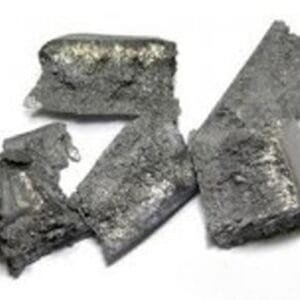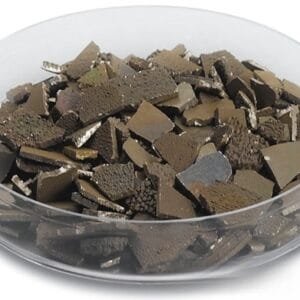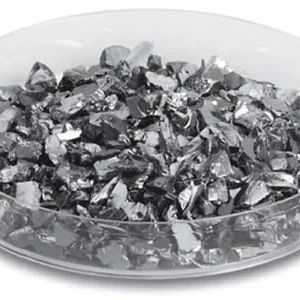Undoped Silicon Evaporation Materials Description
Silicon is a unique metalloid, exhibiting properties characteristic of both metals and nonmetals. It has a high melting point of 1,410°C, a density of 2.32 g/cc, and at 1,337°C, its vapor pressure is around 10^-4 Torr. Silicon is brittle and prone to chipping, but it plays a crucial role as a semiconductor, especially in the electronics and computer industries. It is frequently doped with elements such as arsenic, phosphorus, or boron to modify its electrical properties for various applications.
Silicon is highly inert, showing little reactivity with water and acids, although it can be dissolved in silicates by hot alkaline lyes. In its pure form, silicon appears as dark gray, metallic, and shiny crystals. It possesses excellent thermal conductivity, yet has very low electrical conductivity when pure. When alloyed with aluminum, silicon enhances the strength and reduces the weight of the alloy.
In the field of deposition processes, high-purity undoped silicon evaporation materials are crucial for producing high-quality deposited films. TFM specializes in manufacturing silicon evaporation materials with purity levels of up to 99.999%. Our rigorous quality assurance procedures ensure the reliability and superior performance of our products.
![]()
Undoped Silicon Evaporation Materials Specification
| Material Type | Undoped Silicon |
| Symbol | Si |
| Color/Appearance | Dark Gray with a Bluish Tinge, Semi-Metallic |
| Melting Point | 1,410 °C |
| Density | 2.32 g/cc |
| Thermal Conductivity | 150 W·m-1·K-1 (25°C) |
| Thermal Expansion | 2.6 x 10-6/K (25°C) |
| Bulk Resistivity | 0.005-0.020 OHM-CM |
| Synonyms | Undoped Silicon Pellets, Undoped Silicon Pieces, Undoped Silicon Evaporation Pellet, Undoped Si Pellets, Undoped Si Pieces, Undoped Si Evaporation Pellet |
Undoped Silicon Evaporation Materials Application
Undoped Silicon Evaporation Materials Packaging
We meticulously handle our undoped silicon evaporation materials to ensure they remain undamaged during storage and transportation, preserving their quality and integrity in their original condition.
Get Contact
TFM offers undoped silicon evaporation materials in a range of forms, purities, sizes, and price points. We specialize in manufacturing high-purity e-beam evaporation materials, focusing on achieving the highest density and smallest average grain sizes possible. For information on current prices for evaporation pellets and other deposition materials not listed, please send us an inquiry.

 MSDS File
MSDS File



Reviews
There are no reviews yet.